Affiliate Disclosure: Some of the links in this post are affiliate links. As an Amazon Associate, we earn from qualifying purchases. Read more in our affiliate policy.

Car Window Tinting Percentage Laws In The US By State
The last thing that you want to do after getting your windows tinted with the best tint you’ve found is to find out that you’ve broken the law by getting pulled over for having tinted your windows too darkly. If you experience a situation like this, the only way is to get tint removed from car windows, unfortunately.
There are some arguments if laws are written with your safety while driving or for ease of the police to look in, but at the end of the day if you go darker than legally allowed you can get into some trouble.
To help you find the answers quickly, we prepared this guide on window tint percentages by State. We hope you’ll find it helpful. Here we go.
Tinted Windows Law by State
There are a number of things to consider when looking at the first legal limits of window tinting. The first is where you live.
We will cover some general conventions in the USA (with by state breakdown in our chart below), but particular states or even counties can have their own laws concerning the topic.
Also, if you live outside the USA you might be subject to different laws that might allow for either more or less tinting.
Car Window Tinting Percentage Law
As you look at laws you will quickly find that there isn’t one easy number to say you can have this percent tint on your car windows. Most places will view the windshield, front side windows, and rear side window differently and have a tinting level limit for each.
Additionally, some things are written saying that a given window tint will block a certain percentage of light and others will reference the amount of light that is allowed through the window. Be sure that you double-check what the number means and where on the car they are discussing.
In most cases, the front windshield is the most restrictive. In most places, only the top four inches of the windshield can have any tint, but it is normally specified that it cannot be reflective. A good rule of thumb for your side windows is to pick tinting that will allow 35% of the visible light through.
However, you’ll find that in some states you can have more tinting. For example, in New Mexico, the front side windows can be tinted to only let in 20% of the visible light whereas in Pennsylvania you have to let 70% of the light through the front windows and in New Jersey, you simply can’t tint the front windows.
In some states, there is no limit to the rear window and the back windshield.
Can I have Tinted Windows on My Vehicle?
Of course, you will want to check to make sure you have the most up to date information for your local area before applying any tinting. Some locations have other restrictions on things such as color and reflectivity. Other places have different laws for sedans than vans or SUVs.
Additionally, you’ll want to think about the possibility of moving prior to tinting your windows, if this is in the cards you might want to look at your next state’s laws before you start.
Below you will find a table showing the current legal status regarding window tinting in all 50 States. The table shows the status as of the date of publication of this article.
US State Window Tinting Law Summary Chart
Explanation and Terminology
- VLT%: Visible light transmission – the measurement used to assess automotive window tints. The percent of visible light that gets through either the film (film VLT%) or window plus film net VLT%. The lower the VLT%, the darker the tint.
- Front-side window tint level: The amount of tint (VLT%) you’re allowed on your driver and front passenger windows.
- Rear-side window tint level: The amount of tint (VLT%) you’re allowed on your rear side windows.
- Rear window tint level: The amount of tint (VLT%) you’re allowed on your rear window.
- Windshield: Windshield cannot be tinted in any state.
- Color: Tint color vary from no restrictions at all to restrictions on the use of certain colors or reflective/mirrored finishes.
- AS-1 Line: The line extending from the letters AS-1, found on most motor vehicle windshields, running parallel to the top of the windshield.
State Law Summary Chart
| State | Front Side Windows | Back Side Windows | Rear Window | Windshield | Tint Reflectivity | Other Restrictions | |
|---|---|---|---|---|---|---|---|
| Alabama | 32% | 32% | 32% | 6 inches | no more than 20% reflective | none | |
| Alaska | 70% | 40% | 40% | 5 inches | no metallic or mirrored tinting | no red, yellow or amber tinting allowed | |
| Arizona | 33% | any | any | tinting allowed to the top of the manufacturer’s as-1 line | no more than 35% reflective | red and amber not permitted, back window tinting requires the use of dual side mirrors | |
| Arkansas | 25% | 25% | 10% | 5 inches | no metallic or mirrored tinting | none | |
| California | 70% | any | any | 4 inches | no more reflective than a standard window | red, amber, and blue not allowed. dual side mirrors required for back tinted windows | |
| Colorado | 27% | 27% | 27% | 4 inches | no metallic or mirrored tinting | red and amber not permitted, back window tinting requires the use of dual side mirrors | |
| Connecticut | 35% | 35% | any | non-reflective tint above the as-1 line | no more than 21% reflective | dual side mirrors required for back tinted windows | |
| Delaware | 70% | any | any | non-reflective tint above the as-1 line | no metallic or mirrored tinting | dual side mirrors required for back tinted windows | |
| Florida | 28% | 15% | 15% | non-reflective tint allowed above the as-1 line | no more than 25% reflective | dual side mirrors required for back tinted windows | |
| Georgia | 32% | 32% | 32% | 6 inches | no more than 20% reflective | red and amber not allowed | |
| Hawaii | 32% | 35% | 35% | no inch requirent, must allow 70% of light | no metallic or mirrored tinting | dual side mirrors required for back tinted windows | |
| Idaho | 35% | 20% | 35% | tinting allowed to the top of the manufacturer’s as-1 line | no more than 35% reflective | dual side mirrors required for back tinted windows | |
| Illinois | 35% | 35% | 35% | 6 inches | must be non-reflective | dual side mirrors required for back tinted windows | |
| Indiana | 30% | 30% | 30% | tinting allowed to the top of the manufacturer’s as-1 line | no more than 25% reflective | none | |
| Iowa | 70% | any | any | tinting allowed to the top of the manufacturer’s as-1 line | no excessive reflections allowed, but not specified | none | |
| Kansas | 35% | 35% | 35% | tinting allowed to the top of the manufacturer’s as-1 line | no metallic or mirrored tinting | red, amber and yellow are prohibited and must have dual side mirrors for back tinted windows | |
| Kentucky | 35% | 18% | 18% | tinting allowed to the top of the manufacturer’s as-1 line | no more than 25% reflective | none | |
| Louisiana | 40% | 25% | 12% | tinting allowed to the top of the manufacturer’s as-1 line | no more than 20% reflective | none | |
| Maine | 35% | any | any | 4 inches | must be non-reflective | dual side mirrors required for back tinted windows | |
| Maryland | 35% | 35% | 35% | 5 inches | no law | red, amber and yellow are prohibited and must have dual side mirrors for back tinted windows | |
| Massachusetts | 35% | 35% | 35% | 6 inches | no more than 35% reflective | must have dual side mirrors required for back tinted windows | |
| Michigan | any percent, but only 4 inches from the top of window | any | any | 4 inches | no more than 35% reflective | none | |
| Minnesota | 50% | 50% | 50% | none allowed | no more than 20% reflective | none | |
| Mississippi | 28% | 28% | 28% | tinting allowed to the top of the manufacturer’s as-1 line | no more than 20% reflective | none | |
| Missouri | 35% | any | any | tinting allowed to the top of the manufacturer’s as-1 line | no more than 35% reflective | must have dual side mirrors for back tinted windows | |
| Montana | 24% | 14% | 14% | tinting allowed to the top of the manufacturer’s as-1 line | no more than 35% reflective | none | |
| Nebraska | 35% | 20% | 20% | 5 inches or as-1 line, whichever comes first | no more than 35% reflective | unclear on side mirrors, but red, amber and yellow are not permitted | |
| Nevada | 35% | any | any | tinting allowed to the top of the manufacturer’s as-1 line | no law | dual side mirrors required for back tinted windows | |
| New Hampshire | no tinting allowed | 35% | 35% | 6 inches | no metallic or mirrored tinting | dual side mirrors required for back tinted windows | |
| New Jersey | no tinting allowed | any | any | no tint allowed | no metallic or mirrored tinting | dual side mirrors required for back tinted windows | |
| New Mexico | 20% | 20% | 20% | 5 inches or as-1 line, whichever comes first | no law | dual side mirrors required for back tinted windows | |
| New York | 70% | 70% | any | 6 inches | no metallic or mirrored tinting | dual side mirrors required for back tinted windows | |
| North Carolina | 35% | 35% | 35% | tinting allowed to the top of the manufacturer’s as-1 line | no more than 20% reflective | red, amber and yellow are prohibited and must have dual side mirrors for back tinted windows | |
| North Dakota | 50% | any | any | no more than 70% | no metallic or mirrored tinting | dual side mirrors required for back tinted windows | |
| Ohio | 50% | any | any | no more than 70% | no more reflective than a standard window | none | |
Oklahoma | 25% | 25% | 25% | 5 inches or as-1 line, whichever comes first | no more than 20% reflective | dual side mirrors required for back tinted windows | |
| Oregon | 35% | 35% | 35% | 6 inches | no more than 13% reflective | red, green, yellow, black and amber tints are not allowed, and must have dual side mirrors for back tinted windows | |
| Pennsylvania | 70% | 70% | 70% | none allowed | no metallic or mirrored tinting | dual side mirrors required for back tinted windows | |
| Rhode Island | 70% | 70% | 70% | tinting allowed to the top of the manufacturer’s as-1 line | no law | none | |
| South Carolina | 27% | 27% | 27% | tinting allowed to the top of the manufacturer’s as-1 line | must be non-reflective | red, amber and yellow are prohibited and must have dual side mirrors for back tinted windows | |
| South Dakota | 35% | 20% | 20% | tinting allowed to the top of the manufacturer’s as-1 line | no metallic or mirrored tinting | none | |
| Tennessee | 35% | 35% | 35% | tinting allowed to the top of the manufacturer’s as-1 line | no metallic or mirrored tinting | none | |
| Texas | 25% | 25% | any | 5 inches or as-1 line, whichever comes first | no more than 25% reflective | red, amber, and blue not allowed. dual side mirrors required for back tinted windows | |
| Utah | 43% | any | any | tinting allowed to the top of the manufacturer’s as-1 line | no metallic or mirrored tinting | dual side mirrors required for back tinted windows | |
| Vermont | none | any | any | tinting allowed to the top of the manufacturer’s as-1 line | no metallic or mirrored tinting | dual side mirrors required for back tinted windows | |
| Virginia | 50% | 35% | 35% | tinting allowed to the top of the manufacturer’s as-1 line | no more than 20% reflective | red, amber and yellow are prohibited and must have dual side mirrors for back tinted windows | |
| Washington | 24% | 24% | 24% | 6 inches | no more than 35% reflective | red, green, yellow, black and amber tints are not allowed, and must have dual side mirrors for back tinted windows | |
| Washington D.C. | 70% | 50 percent for cars, 35 percent for multi-purpose vehicles | 50 percent for cars, 35 percent for multi-purpose vehicles | 5 inches or as-1 line, whichever comes first | no law | none | |
| West Virginia | 35% | 35% | 35% | 5 inches | 20% reflective | red, amber and yellow are prohibited and must have dual side mirrors for back tinted windows | |
| Wisconsin | 50% | 35% | 35% | tinting allowed to the top of the manufacturer’s as-1 line | no law | dual side mirrors required for back tinted windows | |
| Wyoming | 28% | 28% | 28% | 5 inches or as-1 line, whichever comes first | no more than 20% reflective | dual side mirrors required for back tinted windows |
References:
- International Window Film Association IWFA (www.iwfa.com)
- AAA Digest of Motor Laws (drivinglaws.aaa.com)
- NY Department of Motor Vehicles (dmv.ny.gov)
Disclaimers
All product names, logos, and brands are property of their respective owners. All company, product and service names used in this website are for identification purposes only. Use of these names, logos, and brands does not imply endorsement.
It is our policy to make every effort to respect the copyrights of outside parties. If you believe that your copyright has been misused, please provide us with a message stating your position and we will endeavor to correct any misuse immediately.
Some of the links in this post are affiliate links. As an Amazon Associate, we earn from qualifying purchases. This means if you click on the link and purchase the item, we may receive an affiliate commission, at no extra cost to you. This helps us keep this website alive. Read more in our affiliate policy.

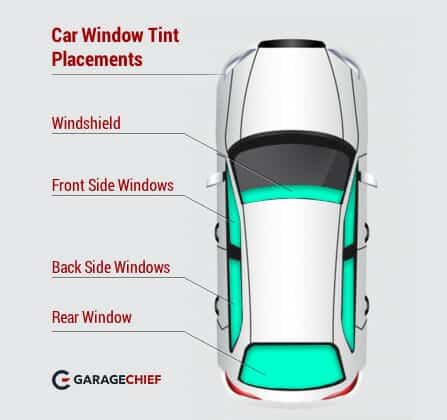


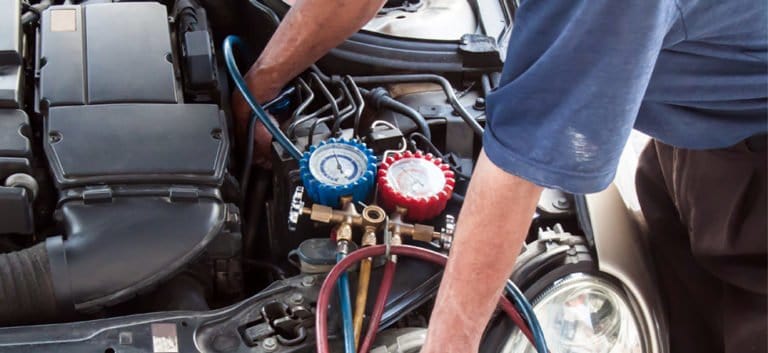
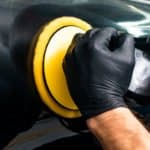
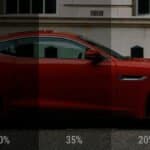

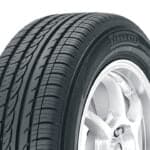
Great post. You said this right. The front windshield is the most restrictive.
Alaska 70 percent?!?! Liberal nanny state right there :-p
It’s good to know that window tinting in Texas isn’t allowed to be more than 25% reflective. My sister mentioned she wants to have the windows of her sedan tinted so it will stay cooler while parked. I’ll share this info so she’s aware of applicable regulations before moving forward with a window tinting service soon!